What is elbow arthroscopy?
Elbow arthroscopy is a minimally invasive surgical procedure used to diagnose and treat a range of problems affecting the elbow joint. It involves inserting a small camera (arthroscope) and fine surgical instruments through tiny incisions to access the inside of the joint.
This keyhole approach allows your surgeon to remove loose fragments, smooth worn cartilage, release tight tissue, or treat inflammation — all with minimal disruption to surrounding muscles and ligaments.
When is elbow arthroscopy recommended?
You may be offered elbow arthroscopy if you have:
- Ongoing elbow pain or stiffness not improving with non-surgical treatment
- Locking or catching sensations in the joint
- Loose bone or cartilage fragments (loose bodies)
- Tennis elbow or golfer’s elbow that hasn’t improved with injections or physiotherapy
- Arthritis or early cartilage wear
- Previous injury or surgery that has led to restricted movement
- Signs of inflammation or impingement inside the joint
It is commonly used when scans have shown a mechanical problem in the elbow or if symptoms persist despite conservative care.
What does the surgery involve?
Elbow arthroscopy is usually performed under general anaesthetic and takes around 45 to 90 minutes, depending on the complexity of the condition.
During the procedure, your surgeon will:
- Make 2 to 4 small incisions around the elbow
- Insert a camera to inspect the joint
- Remove any loose bodies or bony spurs
- Smooth cartilage surfaces
- Release tight structures or scar tissue
- Wash out inflammation or debris from the joint
The exact steps will depend on what is found and your individual diagnosis.
Recovery and rehabilitation
You’ll usually go home the same day. A bulky dressing is applied to protect the joint, and a sling may be used for comfort in the first few days.
Recovery times vary based on what was done during the procedure, but generally:
- You can return to desk work within 1 to 2 weeks
- Light activities are possible by 3 to 4 weeks
- Full return to sport or physical work may take 2 to 3 months
Physiotherapy is often recommended to help regain strength and movement in the elbow after surgery.
Risks and complications
Elbow arthroscopy is a safe and effective procedure, but like all surgery, it carries some risks. These may include:
- Infection
- Swelling or bleeding in the joint
- Nerve injury (rare, but more likely in elbow surgery due to nerve proximity)
- Stiffness or limited movement
- Incomplete relief of symptoms
Your surgeon will talk you through these risks and what to expect from your recovery.
What are the results like?
Most patients experience significant relief of pain and improved movement, especially when the surgery is performed for mechanical problems like loose bodies or impingement. In cases of arthritis, it can reduce symptoms and delay the need for more invasive surgery.
Why choose Midlands Orthopaedic Clinic?
At Midlands Orthopaedic Clinic, our expert upper limb surgeons perform elbow arthroscopy regularly using the latest techniques and high-definition imaging systems. We specialise in treating complex elbow conditions with a patient-centred approach, rapid diagnosis, and a clear path to recovery.
We work closely with physiotherapists to ensure your rehabilitation is smooth and effective, helping you return to work, sport, and everyday life.
Get in touch
If you’re struggling with elbow pain, stiffness, or locking, and want to explore whether keyhole surgery could help, we’re here to support you. Contact Midlands Orthopaedic Clinic today to book a consultation with an experienced elbow specialist.




